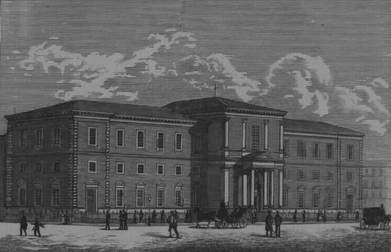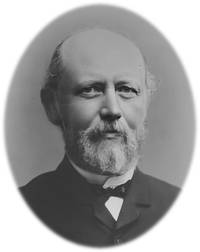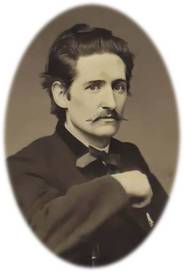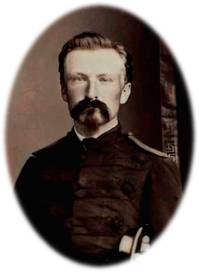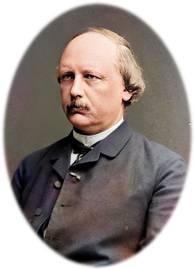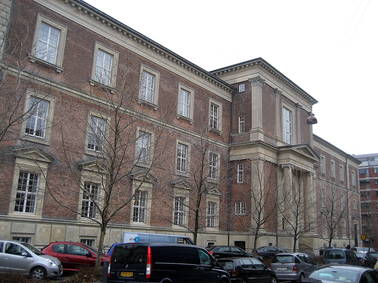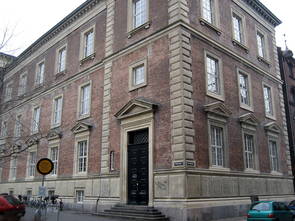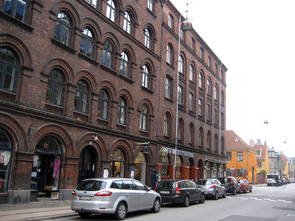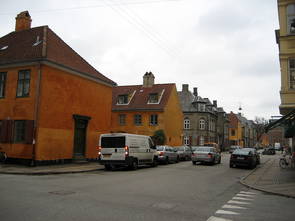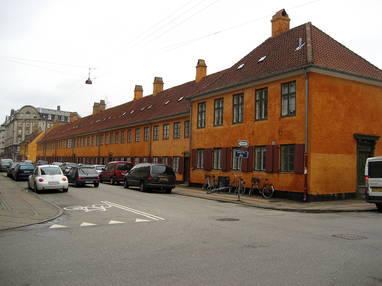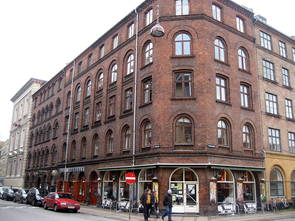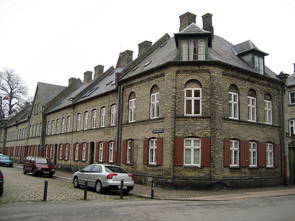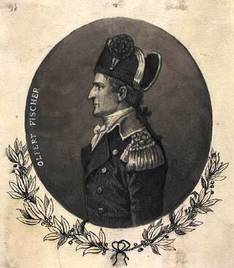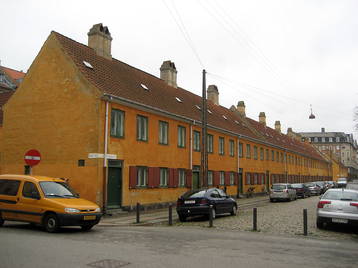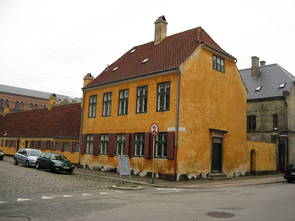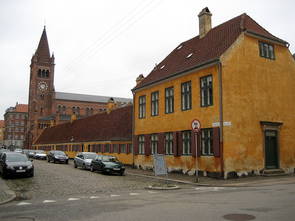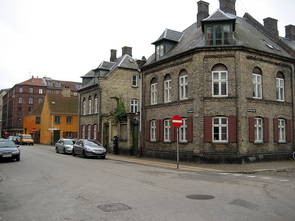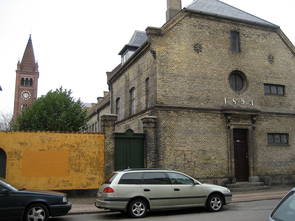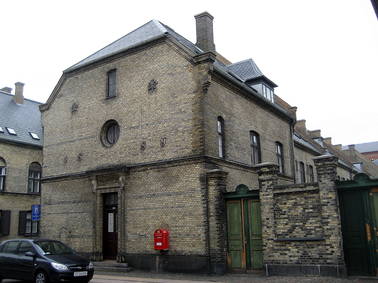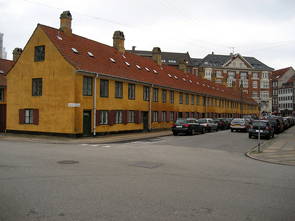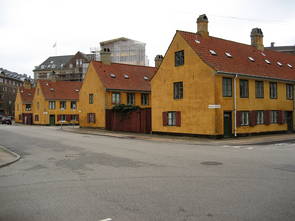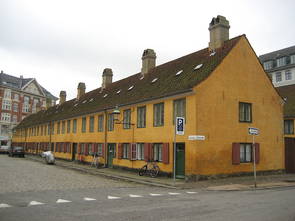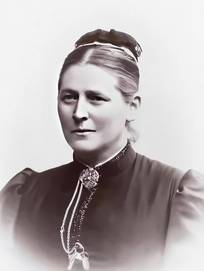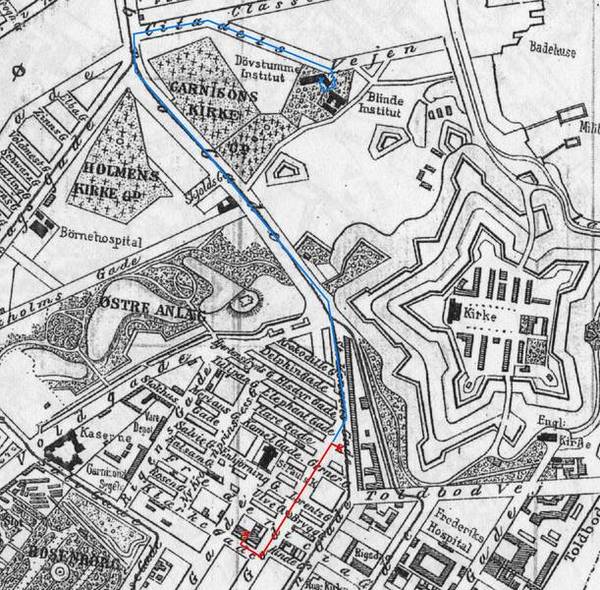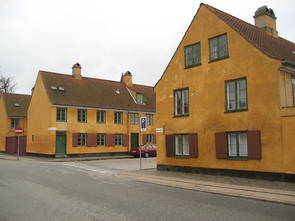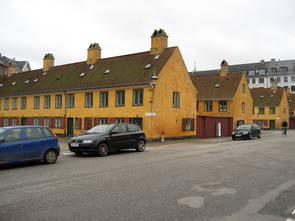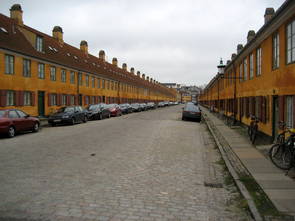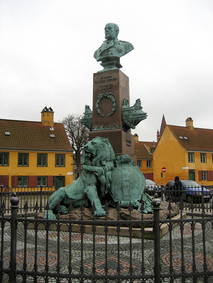Malling-Hansen's last walk

- Some of RMH's closest friends during the last part of his life were members of the same lodge as him. Erik Ritzau, 1839-1904, founder of Ritzau's Bureau. Photo: The Royal Library
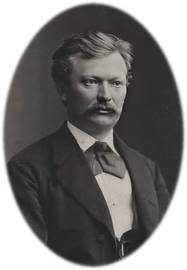
- Johannes Kaper, 1838-1906 was the leading man of the lodge from 1896 until 1904. Photo: The Royal Library
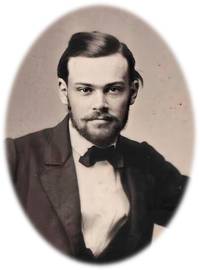
- Also member was shipping ingenieer Johannes Prior, 1840-1896, son of the famous founder of the first steam ship line between Copenhagen and Oslo, HP Prior. His three grandsons Cay, Eric and Viggo Prior were all very good friends of one of RMH's daughters, Johanne Agerskov, and very dedicated spokesmen for Johanne Agerskov's book, Toward the Light.

- The symbol of the lodge "Frederik and Zorobabel to the Crowned Hope", which was established in 1745
The most detailed description of what happened on the night of Rasmus Malling-Hansen’s death is found in an obituary printed in the Danish newspaper, ”Politiken” the day after – on the 28th of September 1890:
“Yesterday evening at 10.30 some people who was coincidentally passing in Borgergade, noticed that a well dressed gentleman wavered and fell to the ground. When a couple of young people who was conversing on the other side of the street, run to him, they found that he was dead.
The physician who was called, Dr. Breuning Storm, could only ascertain that the death had already occurred and arranged for the body to be carried into the house of “Underbaadsmand Knudsen”, who lives on the corner of Borgergade and Leopardlængen. Already before this a gentleman who came to the place had recognized the deceased. It was Malling-Hansen, the inventor of the Writing Ball, and author of “Periods in the Growth of Children and the Heat of the Sun”.
The police of “Nyboder” let, when the identity of the body was confirmed by an identity card found in the breast pocket, a station sergeant drive out to the Institute for the Deaf-Mutes where he in the gentlest way delivered to Mrs. Malling-Hansen the message of her husbands death. One can easily imagine her sudden despair. The porter of the Institute thereafter followed to Borgergade, and carried, by the help of to sergeants the body home with him in a wagon.”
On a similar autumn evening more than 100 years later, in November 2009, Jørgen Malling Christensen, who actually is related to Malling-Hansen's brother, Johan Frederik Hansen, brought with him his camera and followed in the footsteps of Malling-Hansen. Underneath you can see the same views as those who met Malling-Hansen on his last walk.

- Two maps showing the Nyboder area, where RMH made the very last walk of his life, on a dark September evening in 1890. The map above shows the streets and their names as they were in 1890. The blue line shows RMH's route from Klerkegade to Leopardlængen
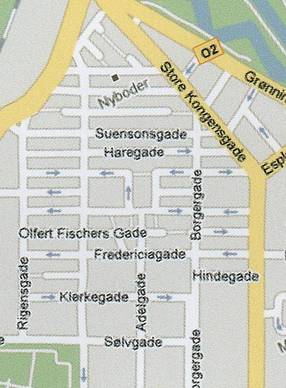
- The second map is from our time, and as one can see, many of the streets are changed and have new names. Balsamgade, Ulvegade and Bryggerlængen are now called Olfert Fischers Gade. Tulipangade, Elephantgade and Leopardlængen are now Suensons Gade. An interesting detail worth noticing is that the royal Institute for the Deaf-Mutes previously was situated in Sølvgade, which can also be seen om the map
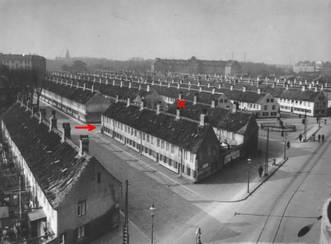
- RMH is getting closer and closer to the point where he got a stroke and fell to the ground. The picture above shows an overview of the last metres of his walk. The red cross shows the building on the corner of Borgergade/Leopardlængen (now Suensonsgade) which he was brought into after his death Photo: The Royal Library

- A second overview from a different angle. RMH came walking towards the viewer, fell to the ground very close to the closest building on the left hand, behind the statue of Vice-Admiral Edvard Suenson. Probably he was brought into the apartment on the right side of the building, also marked by a red cross. Photo: Døvehistorisk Selskab
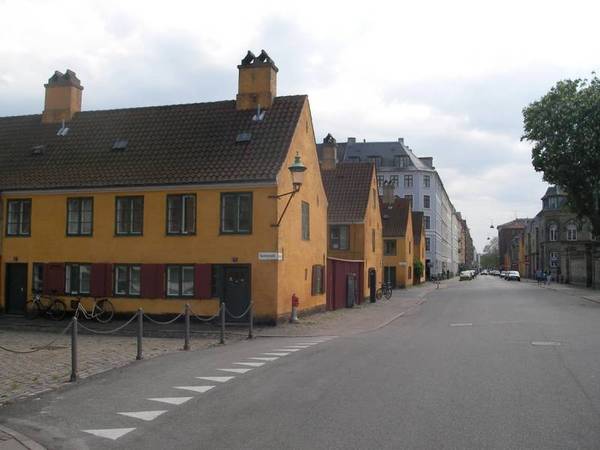
- Corner Borgergade/Leopardlængen (now Suensonsgade). This was where RMH had his stroke on 27 September 1890 around 22H 30. He fell to the ground and passers-by rushed up to him, noting that he was already dead. A physisian called upon had his body placed in this house. The name of the street, was at the time, Lepordlængen. Subsequently a message was sent with a station sargeant to the Royal Institute for the Deaph-Mutes only some 1200 metres to the north. The caretaker of the institute came and brought his body to the institute and to his family. Photo: Sverre Avnskog
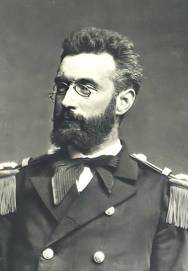
- The physician who came to the place, Hoter Axel Breuning-Storm, 1849-1923, could only ascertain, that RMH was deceased. Photo: The Royal Library
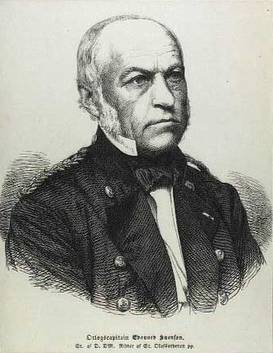
- Vice Admiral Edouard Suenson, 1805-1887. May be RMH had a last look at his memorial before he fell to the ground?And perhaps the sight of Mr. Suenson, reminded him of another peron with exactly the same name - the son, also nemed Edouard Suenson, 1842-1921, and also a navy officer. And apart from that director of "Store Danske Telegraf Kompani". This Mr. Suenson was the very first man to invest a larger sum of money in RMH's most famous invention, buying several speciemens of the Writing Ball in 1871 to the stations both in Denmark and England. Photo: The Royal Library

- It is said that memories of our life passes in our mind just before the death moment, and the statue of Eduard Suenson may very well have reminded RMH of the victories and the defeats of his life - he had so many ideas and projects to execute, but just in a few cases he saw his efforts crowned with succsess. Before he died he once said that he did not want to be celebrated, because in his own mind he should have done so much more.... Photo: The Royal Library
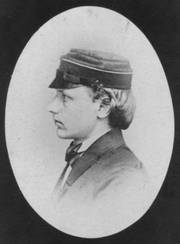
- Rasmus Malling-Hansen on a photo fram 1860. A extraordinary giftet young man, with his head full of ideas, plans and projects to execute! Photo: Private
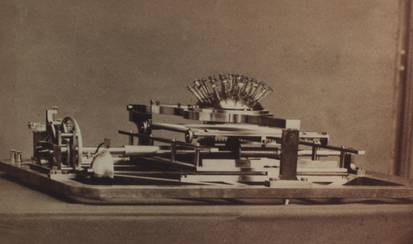
- A large summit in the history of the Writing Ball was when "Store Nordiske Telegraf Kompani" decided to buy several machines of this model to their stations. The future looked bright for the young inventor! Did he manage to fulfill all the dreams of his life during his relatively short lifetime...? Photo: Private
January 2010,
Jørgen Malling Christensen and
Sverre Avnskog

